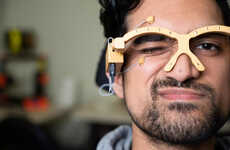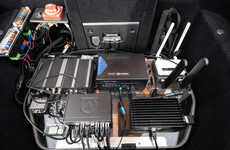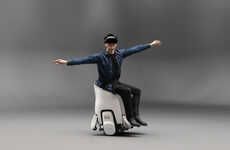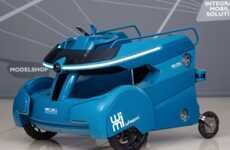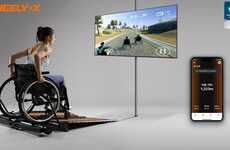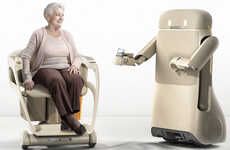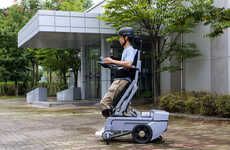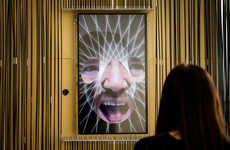
The Wheelie 7 Lets Users Control Functions with Their Face
Justin Lam — December 4, 2018 — Lifestyle
References: hoo-box & fastcompany
Designed to plug into any motorized wheelchair, the Wheelie 7 lets people control their wheelchair with just facial expressions. Created by Hoobox Robotics, a company that utilizes facial recognition and AI to improve human well-being, the Wheelie 7 features underlying Intel technology, thanks to a partnership with Intel's AI for Good division. The adapter kit can easily plug into any motorized wheelchair and as the name suggests, takes about seven minutes to attach and deploy.
The facial tracking technology driving the Wheelie 7 utilizes Intel RealSense computer vision to capture and 3D-map different facial expressions. This technology is paired with a powerful onboard mini-computer that interprets signals from the AI in near real-time. The Wheelie 7 can recognize five facial expressions, each associated with a different directional command, but can also be taught to track up to 10 different expressions.
The facial tracking technology driving the Wheelie 7 utilizes Intel RealSense computer vision to capture and 3D-map different facial expressions. This technology is paired with a powerful onboard mini-computer that interprets signals from the AI in near real-time. The Wheelie 7 can recognize five facial expressions, each associated with a different directional command, but can also be taught to track up to 10 different expressions.
Trend Themes
1. Facial-tracking Technology - Utilizing facial recognition and AI to control functions opens up opportunities for more intuitive and accessible user interfaces.
2. Motorized Wheelchair Adapters - Developing adapter kits that can easily plug into any motorized wheelchair enables quick and seamless integration of innovative technologies.
3. Real-time AI Interpretation - Utilizing powerful onboard mini-computers to interpret signals from AI in real-time opens up possibilities for more responsive and adaptive systems.
Industry Implications
1. Robotics - Applying facial-tracking technology to wheelchairs is a disruptive innovation opportunity in the robotics industry.
2. Healthcare - Integrating facial recognition and AI into motorized wheelchairs can revolutionize accessibility and improve patient well-being in the healthcare industry.
3. Assistive Technology - The development of motorized wheelchair adapters and facial tracking technology presents a disruptive innovation opportunity in the assistive technology industry.
1.6
Score
Popularity
Activity
Freshness


